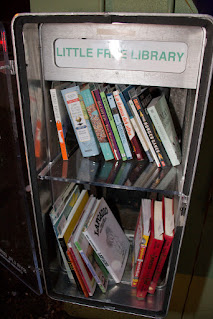This spring and summer, I have seen many photos of little free libraries. Each one is carried for and each one is used. However, let's think about the items in those little free libraries.
The mantra of a little free library (LFL) is:
Take a book. Share a book.
That means that the LFL is dependent on donations. Someone may be curating the LFL, but it is unlikely that the person is filling the LFL based on a collection development policy. Even if that person does have some standards, do those standards assure diversity of content? Is the content inclusive? Is there accessible content? Does the LFL support the diversity in the community (racial, ethnic, gender, etc.)?
I've helped to install little free libraries and I've placed books in them, but the fact that they are generally reliant on donations means that a LFL may not contain the books that will resonate with the community it's in. Imagine an LFL in a Black and Hispanic community that is filled by non-Black and non-Hispanic people who don't live in that community. Will the materials in the LFL represent the community that is using it? No.
This hit home for me when I looked at a little free library outside of a food pantry and realized that the people filling the LFL were from a different demographic.
I don't know how to ensure that a little free library is filled with works that are diverse and inclusive, without causing more work and more cost. Perhaps if folks recognize the problem, that can be a first step towards making each LFL more inclusive, more diverse, and better connected with the community it serves.
If you have ideas on how to solve this problem, post a comment.

No comments:
Post a Comment